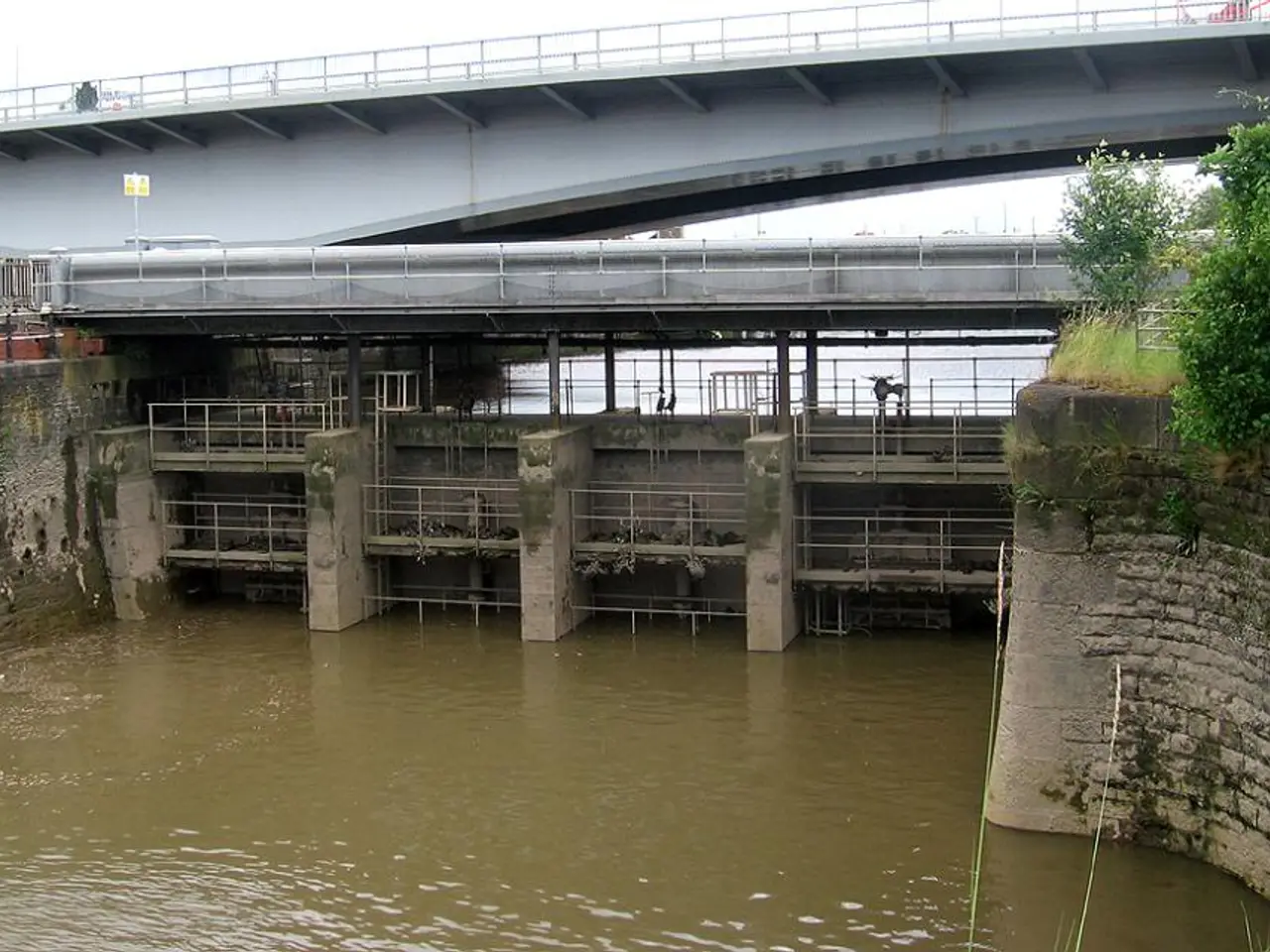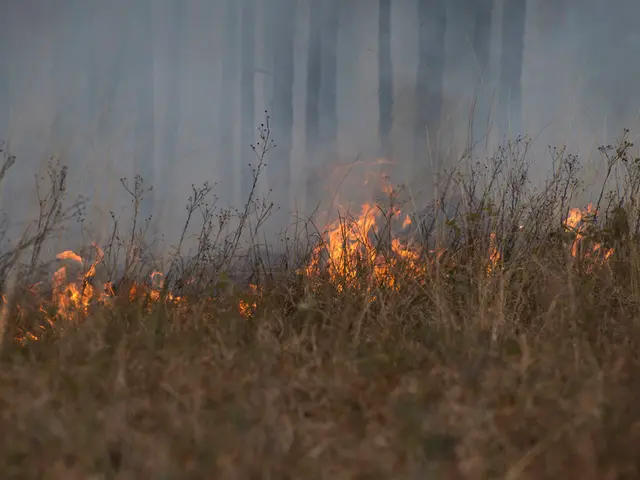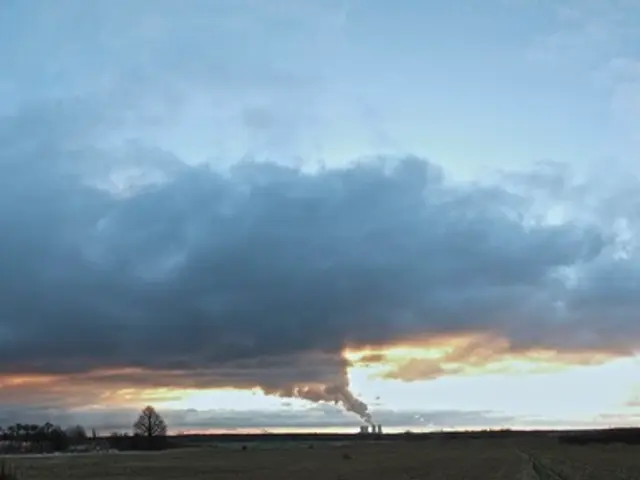Rising flood concerns in Punjab as India plans to discharge water in the Sutlej River
In a developing situation, Punjab is facing a high flood risk due to water releases from dams in India and heavy monsoon rains. The Sutlej River, a major waterway in the region, has seen its flood level return to normal but remains at risk of further increases.
The water level in the Sutlej River at Ganda Singh has stabilised, but there is a risk of a surge in its flow. This comes after the water release from India's Bhakra Dam caused the river level near Harike headworks in Tarn Taran district to rise sharply. Inflows reached approximately 1.12 lakh cusecs, with water releases of around 90,000 cusecs, increasing the flood risk downstream.
Elsewhere, the Ravi river in Gurdaspur district is expected to receive over 1.5 lakh cusecs of water due to full-capacity flows from catchment areas in Jammu and Kashmir. This has prompted flood alerts and warnings for villages along the river.
Heavy rainfall in Himachal Pradesh and Jammu & Kashmir continues to swell tributaries feeding these rivers, intensifying the flood threat in Punjab’s northern and northwestern districts, including Gurdaspur, Tarn Taran, Ferozepur, Hoshiarpur, Kapurthala, and Fazilka.
Authorities have issued alerts advising residents to avoid riverbanks, shift to safer locations, and prepare for emergency response. Health services are on high alert, with medical teams ready for flood-related emergencies.
In Pakistan's Punjab, monsoon floods have caused moderate flooding in rivers like the Indus and Chenab, resulting in displacement and damage to homes and crops. However, these floods are from different river systems and not directly linked to India’s dam water releases.
As of the latest reports, the flood risk remains high due to continued water releases and heavy rain, and the situation is being closely monitored by local administrations and disaster management authorities. The PDMA Punjab helpline number is 1129.
In response to the situation, the Prime Minister, Muhammad Shehbaz Sharif, has been briefed on ongoing relief efforts and preparations for future emergencies. He has also directed the National Disaster Management Authority (NDMA) to strengthen its coordination with provinces in assisting and rehabilitating those affected by recent rains and floods.
The Indus River System Authority (IRSA) has released 375,200 cusecs of water from various rim stations, and a medium to high-level flood warning has been issued for the Chenab River at Marala, Khanki, and Qadirabad. From River Kabul, a total of 30,800 cusecs of water was released at Nowshera, and 55,200 cusecs were released from River Chenab at Marala.
Citizens residing in riverbeds are urged to move to safe locations and cooperate with the administration in case of emergency evacuation. The PDMA Punjab, IRSA, and the Irrigation Department are monitoring the situation of rivers and dams 24/7.
The Bhakra Dam in India is currently 61% full, Pong Dam is 76% full, and Thein Dam is 64% full. The PDMA Punjab fears that India may release water into the Sutlej River in the next two days.
In conclusion, the flood risk in Punjab's rivers remains high due to continued water releases and heavy rain. Residents are advised to stay vigilant and follow instructions from local authorities to ensure safety during this critical period.
The Bhakra Dam's potential release of water into the Sutlej River within the next two days could lead to a surge in its flow, increasing the flood risk further. Additionally, the Ravi river in Gurdaspur district is predicted to receive substantial inflows, prompting flood alerts and warnings for surrounding villages.








